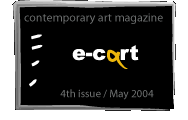









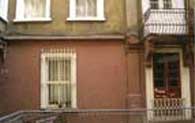





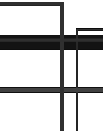

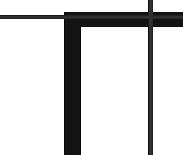

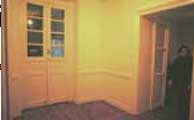
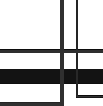


Oda Projesi is an artist collective based in Istanbul Turkey. The core group consists of us, Ozge Acikkol, Gunes Savas and Secil Yersel. The project was intiated in 2000 in an apartment located in a neighbourhood called Galata. At first we have rented an apartment as a shared studio in 1997 in the same neighbourhood and during that time the studio started to become a meeting place for children, for women in the neighbourhood and for the artists as well, so throughout this period the idea of the Oda Projesi originated from the art practices in Istanbul and from the energic dynamics of the neighbourhood. The project takes the concept of the room (oda) as the basic space to start with and extends its area of interest to the courtyard, the street, the neighbourhood and finally the city itself. Starting with the room we organize and make possible various projects in and around our place in collaboration with the neighbours and artists. The project tries to bridge relations between the artists, non-artists, artist run groups, institutions and the communities in the neighbourhood. The project points out the ways of living, multiply the possibilities and represent these acts as a way of making art. It claims that the art making is to produce new livings and new possibilities. It enables everyone to give a new meaning to the artist's identity using the collective structure of the public space, to destroy the art subject and object's pedestal, to expand the aura, to develop relationships and to represent the whole process as a work of art.
Galata
Oda Projesi which means Room Project, is thinking on the different usages of the 'room' which is the simplest case of the space perception, finds a strategy that combines the daily life and art practices. The dynamics of the place affects the project a lot. Galata is a neighbourhood which is very near to the entertainment and cultural center of the city, which is Beyoglu where all kind of events are taking place and in where people from different social and economic backgrounds are rushing to. Beyoglu had always an importance in history with its multinational structure and it was the first area where the first westernalisation movements took place. The minorities were living here and it has an important role in the commerce traffic since it's been the center for the foreign people. The big street Istiklal is reaching Galata in the end which was the old harbour neighbourhood. Oda Projesi environment was the old jewish neighbourhood and when the owners moved, the old buildings became home for the first generation immigrants from the east and north of Turkey coming to Istanbul in the late 70's and mid 80's. By informal relationships with the countryside the immigrant population has grown, the first ones called for their relatives and it's been like a big family has settled. But it's been in a gentrification process since 10 years and now it continues to change and to be shaped by the circulation of people like journalists, artists and so on. The ones who stayed here are mostly the very poor people who didn't have chance to leave this place where they don't feel safe to live in. When we look the city through the gentrification it is also a part of the flexibility of the spaces with the changing image and function of the buildings, streets and it's a very urban move. We can consider the gentrification through the informal formations that we attribute to Istanbul, the flexibility that occurs with these formations and the possibilities that come out of this. Since the gentrification was also a field where Oda Projesi could develop a relationship within the neighbourhood of Galata and transform the gentrification process; we are the outsiders or the others and in the context that we are neighbours we accepted the situation as itself, thinking on exchanging not changing. When with the very first project of Oda projesi Ozge Acikkol has realized in the room in the middle by emptying the room and exhibiting it with the text of George Perec, About a Useless Space, this was an invitation for all to meet in an unidentified place and talk about various possibilities that could take place there. With this project Oda Projesi as the neighbour has opened the room to public. And with the "live works" the attitude of the project has started to occur with the usage of a place in art context and the relation with the artists and the neighbours.
Mapping
The place in Galata that we have rented is three rooms opening one after the other and the room in the middle opening to a courtyard and the courtyard surrounded by four buildings, so the architecture of the surrounding has really shaped the project in itself. After unifying the different meanings put on one single room, sometimes as project space; an exhibition space, sometimes by using the very basic dynamics of the daily life like eating and drinking it functions as a meeting point and sometimes it becomes a multipurpose place used by us and by the neighbours and sometimes it includes all these different usages. These flexibility of the space appropriated from the city provides us different possibilities and produces a third language created with and within this space. From this non-hierarchical usage of the place, some situations and roles which combine the public and private usages are occuring. The project is also interested on exploring and pointing out the common strategies of how these public and private are shared or are becoming together at some point. Especially in a wide city both geographically and socially as Istanbul it is interesting how the different living styles are reflected on these fields. What we call quarter as a kind of isolated place constitutes the starting point of the projects. The inner life at home is reflected on the outer life according to the confort given by this isolation. In the case of the streets of Istanbul transformed to a liveable place by the immigrants it's important to question at what point the public place is differing from the private one or is combined with it. So the public and private also include the problematics coming out from the daily life of the neigbours who are living in the neighbourhood. Oda Projesi took the daily life dynamics of this neighbourhood as a starting point and is reflecting upon different usages of the space whether on the city map or on the 'room'. The daily life is represented by the private field created publicly where the space and time are organized with the personal conditions. Oda Projesi is developping different models of establishing relationships. The live experiences with the people allow a kind of socialization. This relational acts are related to the space because this is a neighbourhood relationship which comes out by sharing the same place and it enables people to make good use of the subjective experiences of each other. So this is a non-hierarchic relationship. I'm sharing my experience with the person who has other experiences than mine. This is totally coming out from the shared space. But Oda Projesi's way of producing socializations and relationships developped through an unexpected process. When as a group of persons, we moved to Galata for just having a studio we didn't have the idea of making an art project in the neighbourhood. After a neighbour relationship process in which we never thought of transforming this situation to something else, we started to work with the children in the streets, in public places, by sharing our educational background which is Painting. At first it appeared more or less like a social project and then in 2000 one of the rooms of the appartment was opened as a project space. The persons invited by us developped projects in collaboration with the inhabitans. So it started through an organic relationship with the environment. All the relationships we're establishing in the flow of the daily life allows us some organic experiences. But we're also questioning, at the point where we work with the institutions how this organic relationship is transformed? How is the project differing from the other socially involved art projects seems like this organic relationship established in this neighbourhood in a natural process. So we're using it as a model when we're invited by an institution to make a project in a public space.
The City
The city is producing signs as an uncompleted but reproduced space. Oda Projesi is working by appropriating this model, it's not producing an object but, using this socialization models, it creates its own model. Oda Projesi is all the time related to the environment, the social and private life which is going on in this and the relation between the people and with the city... The project operates by using these relational methods and moreover these are mostly the neighborhood relations. The space transforms to a meeting point in the neighborhood. And we're taking over the position of the mediator between the artist and the local person. In this case the art production does not form a space to challenge itself, becomes the tool for exploring the existent traces and questions.
8th Istanbul Biennale / POETIC JUSTICE curated by Dan Cameron
"ADA" by Oda Projesi
The project constitutes on that the daily life is strongly present in the organization of the cities such as Istanbul and on reading the city through this informal formations. The project has two different levels in fact. One part was about building a gecekondu. And the second part was the processual projects by different people during two months of the exhibiton at Oda Projesi's project space. Working with a real builder of those kind of houses appeared as a startegy to propose the idea of organizing your living space according to the needs and conditions of the daily life. The project proposes that every person whether poor or not should have different attitudes and resistances in the organization of his/her daily life. It envisages that the people coming from different social and economic backgrounds can change by themselves the ready-made living styles created for them by the macro-economy. Oda Projesi also showed an imaginary real estate advertisement about selling a gecekondu which normally is not sellable and we used the advertisement language of the gated communities:
The Beautiful City Gecekondus
Harmonious with the city's complicated structure, with alternatives of single or double room, or you can build annexes. Houses you can destroy and rebuild, that you can leave in one night. Open a space for yourself.
The Annex bulletin was a part of the work where we took the views of the sociologists, anthropologists, historians and architects. Its function was to create a field for an alternative reading of the city through the gecekondu idea. Oda Projesi is thinking on a new map through the mapping of the community with which it's in relation. Pendik was a summerhouse area as a banlieu near the sea but later, far away from the sea on the inlands the eastern migrants coming from the country or that have moved from another neighbourhoods of Istanbul came and built gecekondus, then it became a suburb where the squatter houses and the gated communities are facing each other. But nowadays there are no traditional one storeyed gecekondus with gardens, it's always 4 or 5 storeyed vertical buildings and they're adding floors when they make more money. Master Mustafa has built gecekondus when he came to Istanbul since the 80's and it was a need but now he's practising construction that he learned from the needs of his daily life.
Oda Projesi
|
|
 |
|
|
||||||||||||||||||||
 |
 |
 |
|
||||||||||||||||||||
 |
|
 |
|
||||||||||||||||||||
|
|
|
|
|||||||||||||||||||||
|
|
|
||||||||||||||||||||||
 |
 |
 |
 |
|
|||||||||||||||||||
|
|
 |
 |
|
||||||||||||||||||||
 |
|
||||||||||||||||||||||
| |
|
 |
|
|
|||||||||||||||||||
 |
|
||||||||||||||||||||||
 |
|
||||||||||||||||||||||
|
|
|
|
|
||||||||||||||||||||
|
|
|
||||||||||||||||||||||
|
|
|
|
|||||||||||||||||||||
|
|
|
|
|||||||||||||||||||||
|
|
 |
|
|
||||||||||||||||||||
 |
|
||||||||||||||||||||||
|
|
 |
 |
 |
|
|
||||||||||||||||||
 |
|
||||||||||||||||||||||
 |
|
||||||||||||||||||||||
 |
|
||||||||||||||||||||||
|
|
|
|
|
|
|
|
|
|
|
|
|
|
|
|
|
|
|
|
|
|
|
|
|